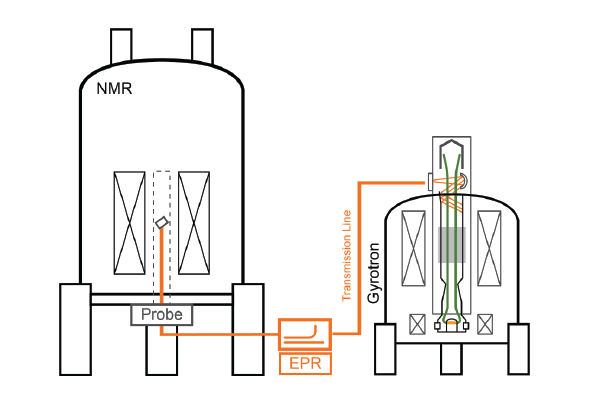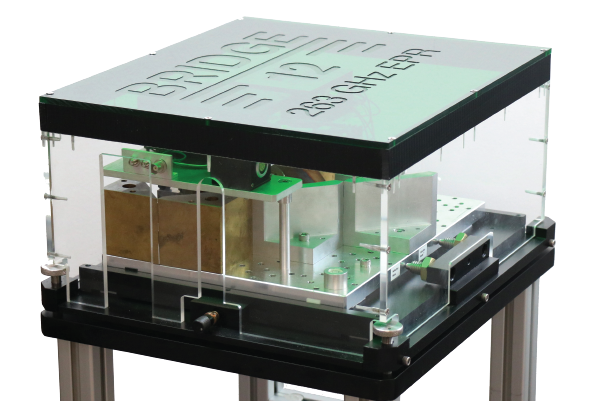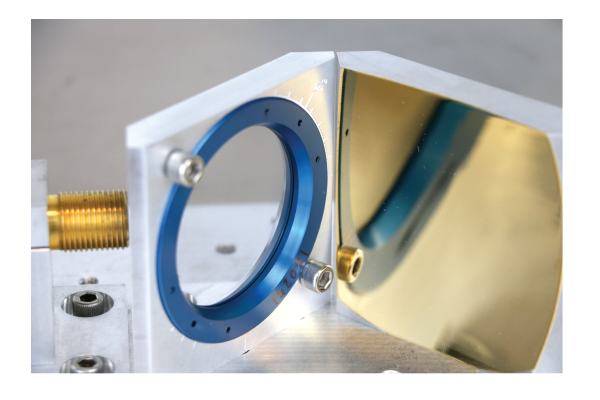
Add EPR to your gyrotron-based DNP System
The Bridge12 EPR add-on is a compact EPR system that can be added to any gyrotron-based DNP system. It enables researchers to:
- Perform in-situ cw/pulsed EPR spectroscopy
- Record the cw EPR spectrometer of the DNP sample in the MAS probe
- Measure EPR relaxation parameters to optimize polarizing agents

Easily integrated into the transmission Line
The EPR add-on is easily integrated into the transmission line connecting the gyrotron to the DNP system. A short section of the corrugated waveguide is replaced with a waveguide switch to allow switching between EPR and DNP operation. The system uses the MAS-DNP probe and no additional EPR probe is required. By eliminating the need for additional superconducting magnets, Bridge12 can deliver this capability at a fraction of the cost of an additional high-field EPR spectrometer.

Compact, low-loss Quasi-Optics
At the heart of the system is a compact, low-loss quasi-optical duplexer for efficient signal detection. The system features its own frequency-agile solid-state microwave source and can be added to DNP systems operating from 200 to > 500 GHz, spanning the complete range of DNP frequency currently used.
Many additional features available
The system is available as a basic continuos wave (cw) spectrometer or as a fully functional time domain EPR spectrometer. Possible options are:
- Superheterodyne detection for increased sensitivity
- Pulsed EPR capabilities to measure T1/T2 relaxation times
- Arbitrary waveform generated (AWG) pulses for increased excitation bandwidth
Many of these features can also be added later on to the system.
Technical Specifications
- Operating Frequency: 263, 329, 395, 527 GHz (exact frequency depends on the NMR system)
- Output power: The microwave power strongly depends on the operating frequency. At 263 GHz > 200 mW are currently available.
- A connection kit is available to integrate into the transmission line. Manual switch to select EPR or DNP operation
- The spectrometer is completely computer controlled using SpecMan4EPR as the acquisition and control software
- Compact footprint of about 12 in. x 12 in.
- Support structure included